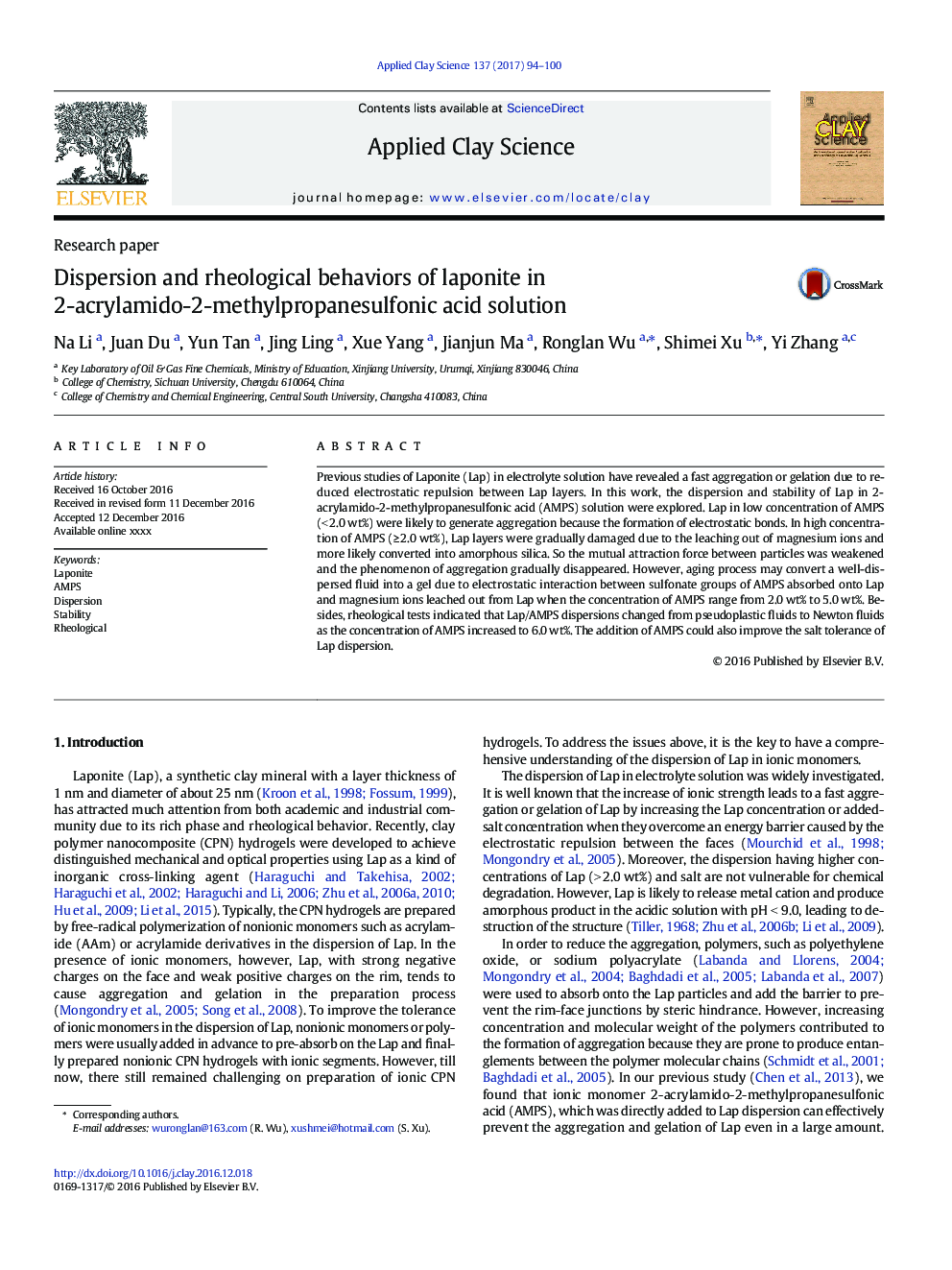| Article ID | Journal | Published Year | Pages | File Type |
|---|---|---|---|---|
| 5469032 | Applied Clay Science | 2017 | 7 Pages |
Abstract
Previous studies of Laponite (Lap) in electrolyte solution have revealed a fast aggregation or gelation due to reduced electrostatic repulsion between Lap layers. In this work, the dispersion and stability of Lap in 2-acrylamido-2-methylpropanesulfonic acid (AMPS) solution were explored. Lap in low concentration of AMPS (< 2.0 wt%) were likely to generate aggregation because the formation of electrostatic bonds. In high concentration of AMPS (â¥Â 2.0 wt%), Lap layers were gradually damaged due to the leaching out of magnesium ions and more likely converted into amorphous silica. So the mutual attraction force between particles was weakened and the phenomenon of aggregation gradually disappeared. However, aging process may convert a well-dispersed fluid into a gel due to electrostatic interaction between sulfonate groups of AMPS absorbed onto Lap and magnesium ions leached out from Lap when the concentration of AMPS range from 2.0 wt% to 5.0 wt%. Besides, rheological tests indicated that Lap/AMPS dispersions changed from pseudoplastic fluids to Newton fluids as the concentration of AMPS increased to 6.0 wt%. The addition of AMPS could also improve the salt tolerance of Lap dispersion.
Related Topics
Physical Sciences and Engineering
Earth and Planetary Sciences
Geochemistry and Petrology
Authors
Na Li, Juan Du, Yun Tan, Jing Ling, Xue Yang, Jianjun Ma, Ronglan Wu, Shimei Xu, Yi Zhang,
